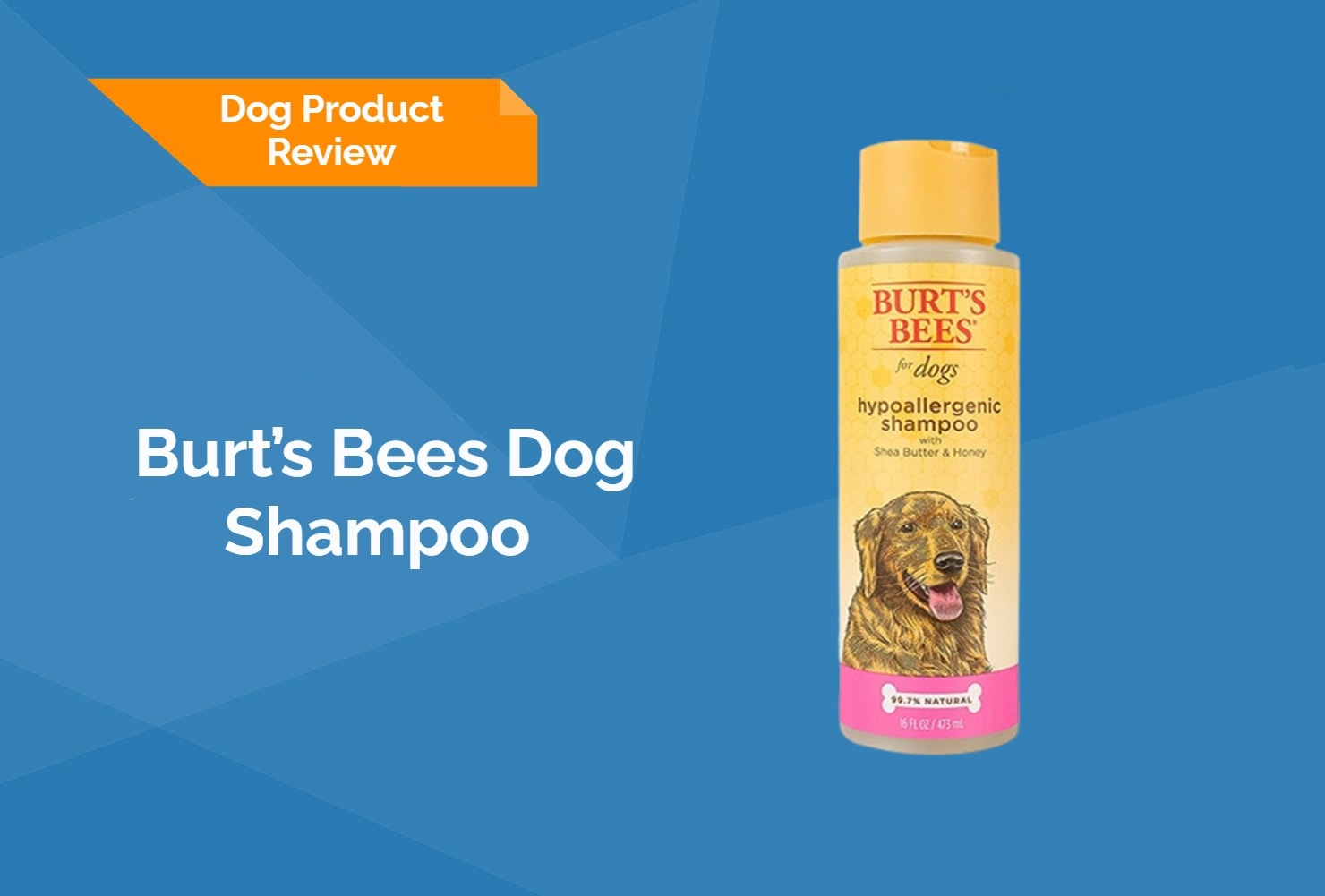My Dog Has Tapeworms, How Should I Clean My House? Vet-Approved Guide
Updated on
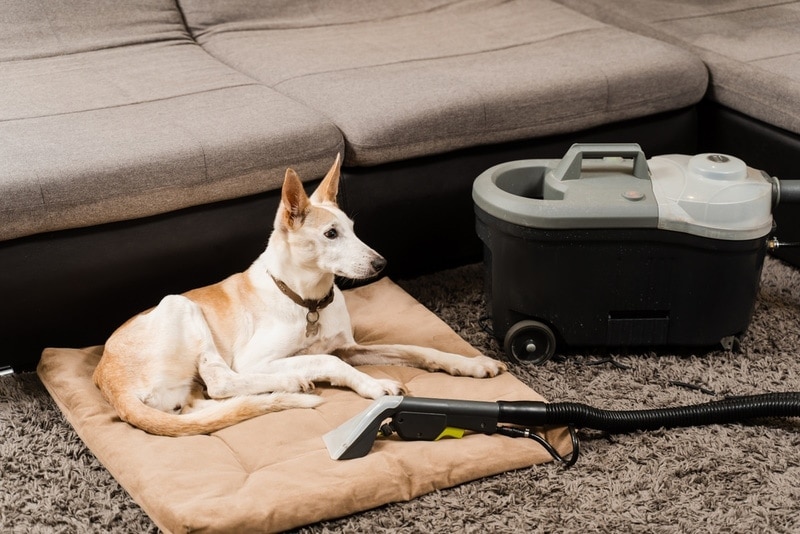
Cleaning up after tapeworms requires several steps, including treating your pup for tapeworms, clearing up the flea infestation, and doing a deep clean of your home. You will also need to treat your yard if you have one. This is a big job, but it’s necessary to remove the tapeworms and prevent another bout.
To understand why such a thorough cleaning is necessary, let’s learn more about tapeworms and their lifecycle. Then, we’ll jump into the list of supplies you’ll need to get started.
What Are Tapeworms?
There are many species of tapeworms, but the most common in dogs is Dipylidium caninum. These worms are transmitted to dogs through fleas. The worms and their eggs can be found on surfaces anywhere your dog has been, including in your home.
The Tapeworm Lifecycle
- Flea larvae eat the tapeworm eggs and then grow into adult fleas.
- When a dog scratches with its mouth, it ingests the infested adult fleas.
- The worms can grow up to 10-28” long and are made of segments that are approximately ½”.
- The segments are called proglottids and can resemble grains of rice.
- Gravid proglottids contain tapeworm eggs and are released through feces.
- When these proglottids dry up, they break open to release the tapeworm eggs.
- Flea larvae eat tapeworm eggs and the cycle can start again.
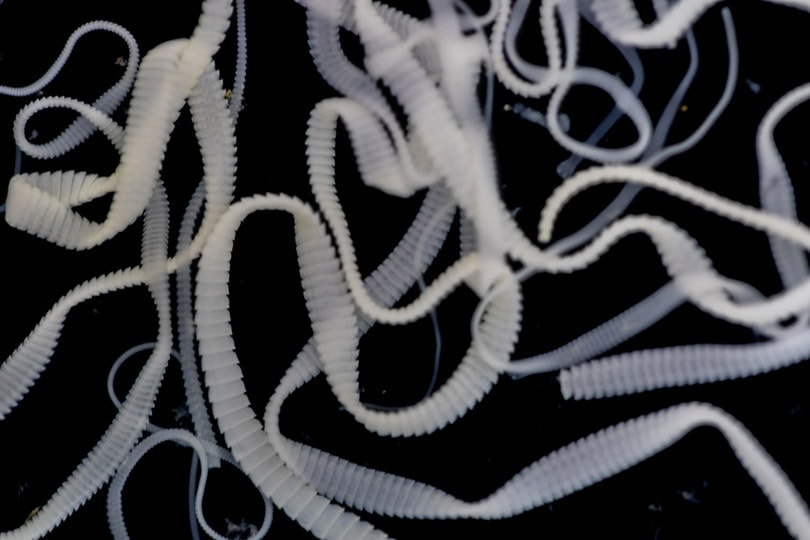
Signs & Symptoms
Tapeworms are usually diagnosed by the presence of proglottids or segments that look like grains of rice. The proglottids may appear on your dog’s feces or around the backside and are usually moving.
Diagnosis & Treatment
They might not appear every time your pup uses the yard or sees the vet, so be sure to collect a few when you bring them in. The vet can properly diagnose the worms and prescribe the correct antiparasitic medication. Medication is the first step toward a healthy pup and a clean house.
What You’ll Need:
- Antiparasitic medication (prescribed by a veterinarian)
- Yard spray for parasites
- Pet waste bags
- Flea treatment (for all pets in the house)
- Stain remover (if needed)
- Vacuum
- Disinfectant cleaner
- Sponge mop
- Flea collar (option)
- Washer and dryer
- Laundry detergent
- Steam cleaner (if possible)
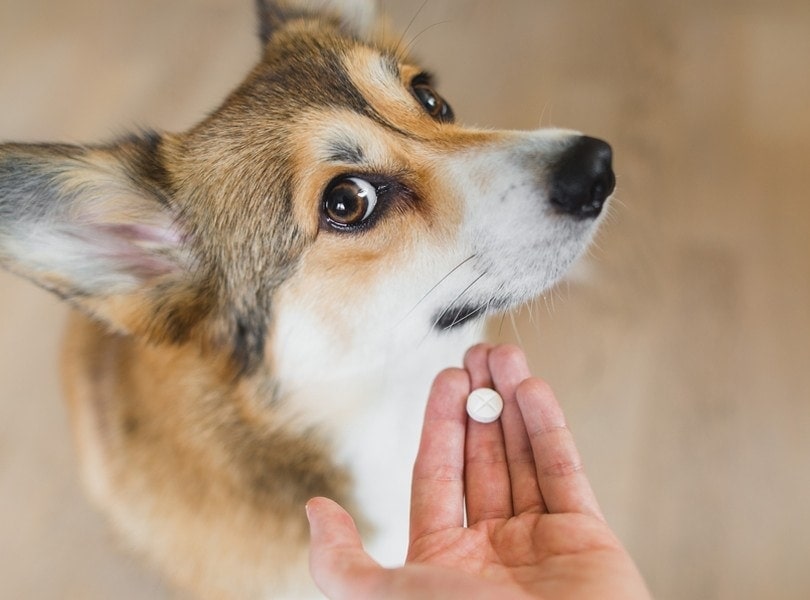
The 10 Steps to Clean Your House
Take the following steps to clean your home if your dog has tapeworms. You must completely rid your home of fleas and prevent reinfection, as reinfection can happen within 2 weeks without proper treatment and sanitization.
1. Treat Your Pet for Tapeworms
The first step is to treat your pet. Medications for tapeworms are safe and very effective. Your veterinarian can prescribe the best antiparasitic for your pup and provide instructions for administering additional doses. You must follow these instructions closely and ensure they get their medication as prescribed.
2. Clean Up Yard Waste and Treat the Lawn
The proglottids containing the tapeworm eggs will be in the yard with your pet’s waste, so cleaning up the yard and treating the area with a yard spray designed for parasites is essential. Be sure to follow the spray instructions closely and keep the yard free of waste. You may need to keep your pet on a leash and use pet waste bags for several weeks.
3. Kill the Fleas
Because fleas are required in this process, getting rid of them is vital. Start with your pets by using an effective flea and tick treatment. Depending on the extent of the flea infestation, you may want to start with a good flea shampoo before applying the topical treatment. Your vet may recommend an oral or injection treatment.
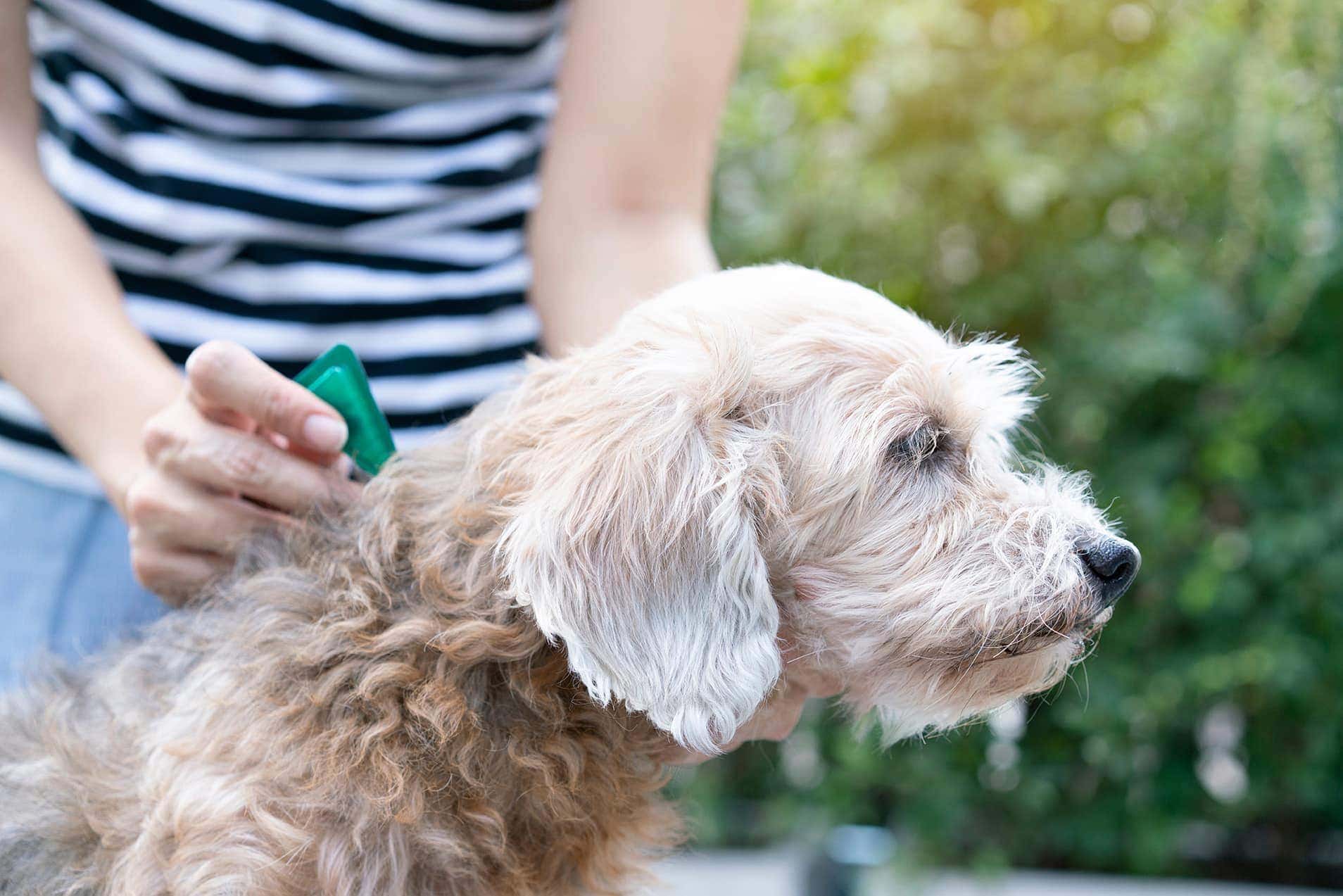
4. Treat Carpet Stains
If your pup has had an upset tummy because of the tapeworms, they may have left some carpet stains. They may have also left a few stains by scooting their bum to relieve the itching caused by the worms. If this is the case, start by using a carpet stain remover approved for your carpet. If you haven’t used that brand before, try spot testing in a corner before applying to larger areas.
5. Clean Hard Surfaces
It’s important to clean hard surfaces as well as carpets and upholstery. Wipe down tile, linoleum, and wood floors with approved disinfectant cleaners. A sponge mop is best, as it provides solid contact with the floor’s surface and can be easily rinsed out. You may want to pick up a cheap one for the deep cleaning and toss it out when you’re done.
6. Launder All Bedding
Any bedding that was out and available to your pet should be washed. This includes their pet beds but also your bedding and that of other family members. Remember to use laundry detergent and the hot water setting. The hottest setting on the dryer will also help, but if pet beds are not machine dryable, laying them out in the sun to dry will work.
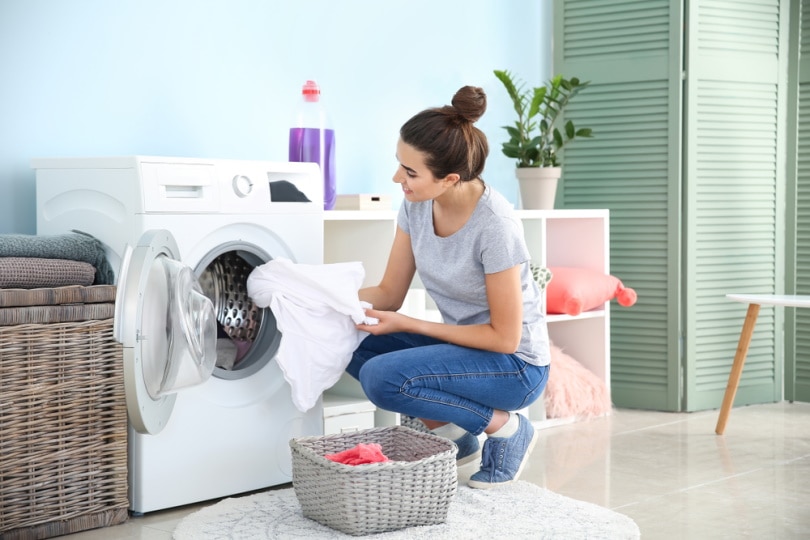
7. Vacuum All Carpeted Floors
Vacuuming carpeted floors is essential to picking up as many fleas as possible. Flea collars are effective on pets, but you can also cut one into pieces and place it in your vacuum’s bag to ensure any fleas picked up are killed immediately and tossed out with the trash. Remember to vacuum under furniture and the surface of any carpeted furniture like cat trees.
8. Vacuum All Upholstery
Upholstery and drapes are familiar hiding places for fleas and should be vacuumed thoroughly. Use a vacuum with a strong upholstery attachment to vacuum drapes or bring them down to wash them if they are machine washable. Remember to remove the couch’s cushions to vacuum beneath them and open closets to clean inside.
9. Use a Steam Cleaner if Possible
If possible, use a steam cleaner to sanitize your home more thoroughly. Because of the lifecycle of fleas and the time it takes eggs to hatch, you may see new fleas emerge in about 2 weeks. However, fleas cannot tolerate heat, so steam is very effective at killing both adults and eggs, stopping the lifecycle once and for all.
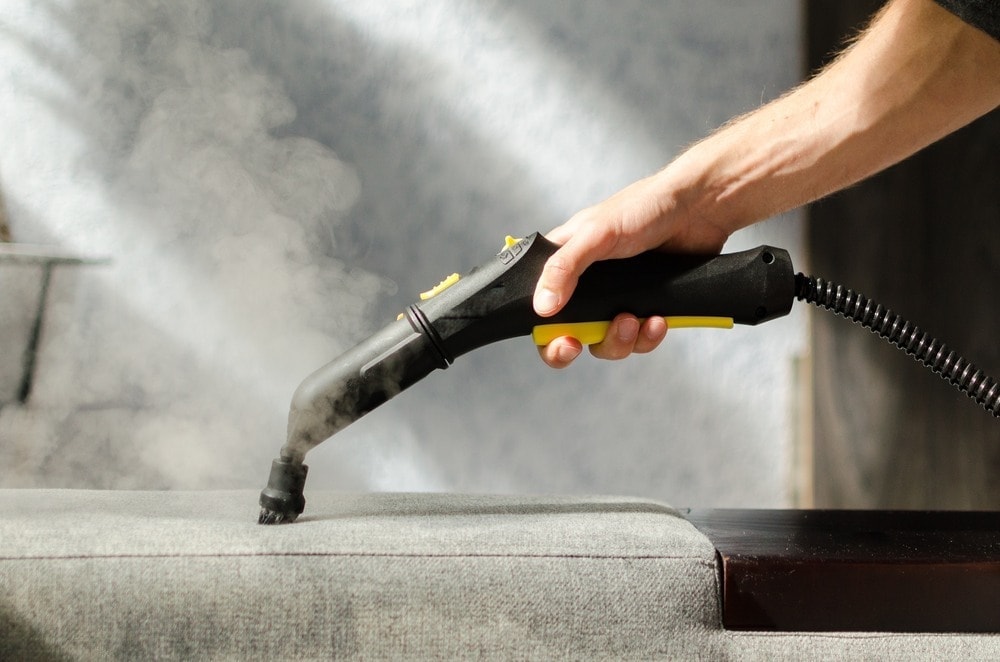
10. Take a Shower
Fleas and tapeworm eggs may have clung to you or your clothing as you were cleaning. Before you call it a job well done, drop your clothing directly into the washing machine, start the cycle with hot water, and then take a hot shower to remove any fleas you may have picked up.
Final Thoughts
The process of cleaning your home is a long one, but once it’s complete and your pup is feeling better, you can rest easy knowing that there’s very little chance the tapeworms will return. It’s time to give the dog a high-five (or a shake!) You did it!
Remember, you can also take additional precautions to prevent fleas and tapeworms in the future, such as using an effective flea and tick preventative regularly and keeping the yard clear of waste. It’s well worth the effort.
Featured Image Credit: Rabizo Anatolii, Shutterstock






